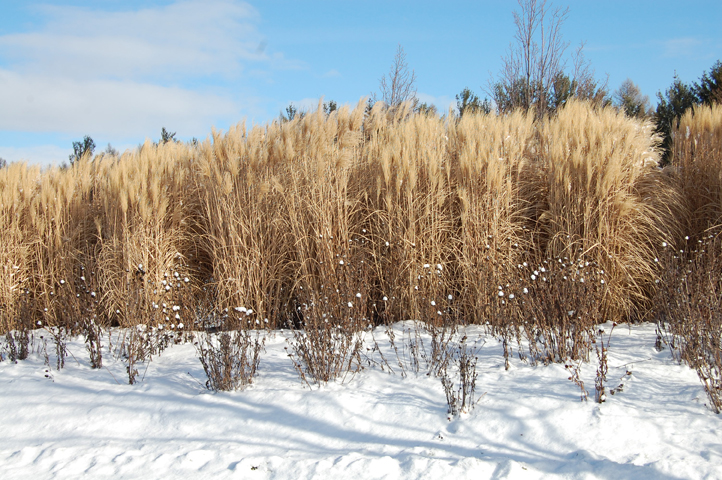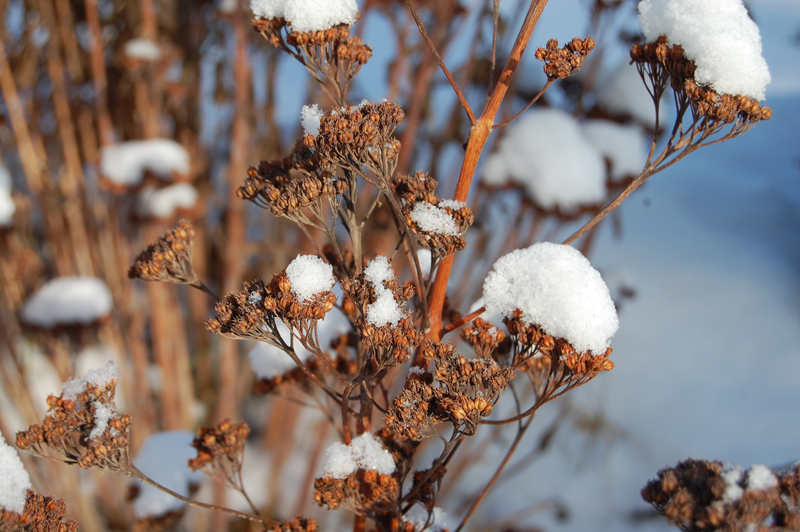Cleaning Up, Or Not, to Increase Biodiversity
Excerpted from The New Canadian Garden, $19.99, 2016, Mark Cullen. All rights reserved. Published by Dundurn Press.
Yesterday’s gardener is what some people would term a “clean freak.” Maniacal, almost obsessive garden cleanup come autumn, however, is no way to encourage and support wildlife. Tall stems are filled with seeds, the dropped fruit are carbohydrate-packed gold mines for birds, and the foliage that will rot away over the winter into spring is home to hundreds of insects and larvae that will grow and become food for others (not to mention, return good old-fashioned nutrients to the soil as they break down).

The winter garden can be an ugly place. An ugly, snow-covered expanse with no visible signs of life, save for a few of the braver birds and panicky squirrels. That is, if you cut everything down in the fall. Winter interest is a term used a lot in gardening circles in Canada. Gardeners appreciate just about anything that reminds us of the greener seasons, so that tall but robust coneflower stem is a welcome contrast to the blindingly bright white of a fresh snowfall. In its own way, the seed head of a perennial or a sunflower poking through the snow is attractive.

Some plants are best composted in the fall and others are best left in the garden. There’s no one-shot recipe for this. I could not say to you: cut all annuals to the ground and leave all perennials.
Here are my recommendations where fall garden prep is concerned:
Read more in my new book ‘The New Canadian Garden’ available at independent book stores and Home Hardware.



